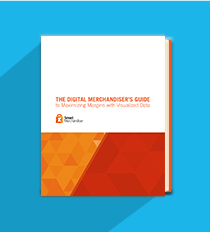
When it comes to online merchandising, the quest to optimize and improve conversion rates can feel tantamount to Captain Ahab's quest for the White Whale, Moby Dick—elusive, essential and all-consuming.
And while the quest for conversion rate optimization (CRO) is highly unlikely to end in anyone's death (as happens in the central plot line in Moby Dick), mastering it is a fundamental cornerstone of any online store's success.
In an age of increasing competition and fickle consumers, how can you knowingly create an experience that's more likely to compel a visitor to convert into a customer?
Enter the world of A/B testing, where hypotheses regarding which design, copy or shade of blue yields the best conversion rate is tested in order to turn "We think this design/copy shade works because…" into "We know this design works because…"
It's a methodology employed across all industries to optimize everything from revenue to Twitter shares, and it will enable your merchandising team to discover, beyond a shadow of a doubt, what works on your website and what doesn't.
Who Uses It
A/B testing is something every industry uses. Facebook famously A/B tested a tiered price point system to find out how much people would pay to send an email to a non-friend. The Obama campaign ran more than 500 A/B tests on web pages and emails over a 20-month period in order to effectively increase conversion rates for donations by 49% and email signups by 161%.
EA's successful A/B testing of its SimCity5 promotion led to 1.1 million copies being sold—half of which were downloads—in the game’s first two weeks of being out.
Across the online sphere, countless companies make use of A/B testing to increase conversion rates and profits. So whether you sell video games, hope or personal connection, A/B testing can land your White Whale.
A/B Testing 101
To A/B test CRO for an online store, two different versions of the same store are created: a control (A), like the site and landing pages you currently have, and a second, alternate version with a single variance (B), such as a site and landing pages with, say, a different "Add to Cart" button.
Both versions go live, and data about each is gathered until a pre-determined sample size is reached. Then, the effects of each versions’ "Add to Cart" button are dissected (i.e. which one resulted in more products finding their way into carts?), and the version that yielded the best results is chosen.
It's a bit of a long-term process that requires patience, because to properly A/B test, only one aspect of a site or page is varied at a time. It's also a process that is most effective when it's ongoing, so that as customer preferences and habits change, you can change with them.
Whether you tackle it yourself or outsource it to experts, good and ongoing A/B testing is the best way to avoid your inner Ahab without giving up your dream of conquering CRO. With Smart Merchandiser, it’s easy to A/B test category pages and different sequencing to determine what’s best for your site’s bottom line.
Download The Digital Merchandiser's Guide to Maximizing Margins with Visualized Data eBook today to learn more!


